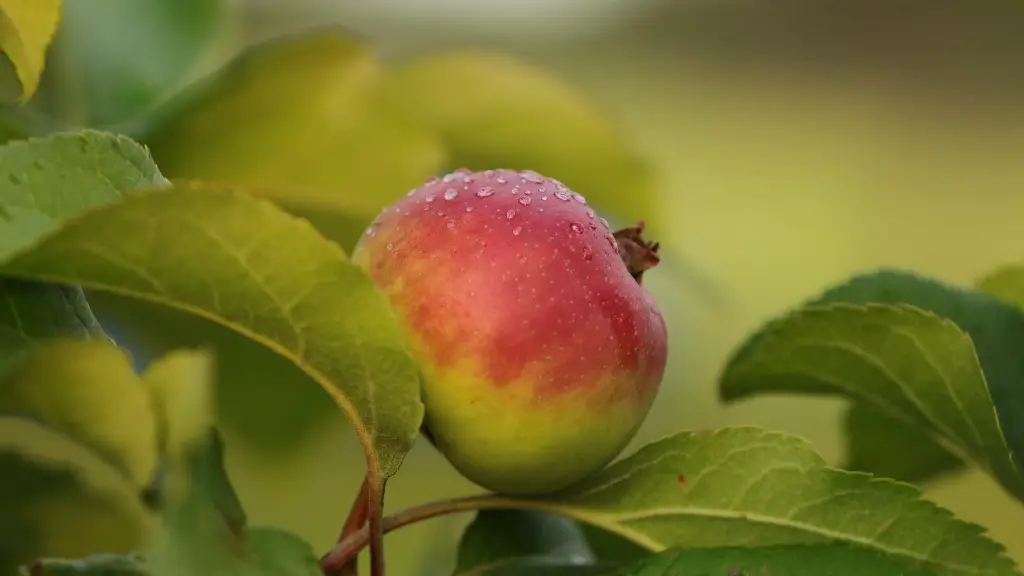As an academic expert, it is important to not only understand the causes of why something happened, but why it did not happen. After all, something not happening is usually just as telling as something actually taking place. In the case of an apple tree not blooming, there could be a variety of issues at play.
Firstly, the tree may not have received enough light or water. Trees of all varieties require water and sunlight to thrive, and when these needs are not met, flowering is often compromised. Therefore, one must consider whether the tree was in an appropriate location or if its location was conducive to the the proper amount of light and water the tree needs.
Second, apple trees need winter chill periods to fulfill the minimum chill hours required to blossom. If the apple tree was not getting enough cold weather, it could be the root cause of why it did not bloom. Moreover, too much cold weather can also stunt blossom production, so a balance needs to be struck in order to ensure healthy blooming.
Third, if the tree has not been properly pruned, it can also affect its production of blossoms. Improper pruning can lead to decreased flowering due to cutting away the buds that would have otherwise been the flowers. It is important to recognize if the tree has had its branches pruned in the past and determine if the timing and amount of pruning was carried out correctly.
Fourth, nutrient deficiencies in the soil can be the cause of reduced bloom production. Touching on this, apple trees need a specific level of nitrogen, phosphorus, and potassium to form its blooms. If any of those core nutrients are missing, it may lead to stunted blooms or lack of blossoms altogether. If the tree has not been receiving adequate nutrition for extended periods of time, this could be yet another reason why the tree did not bloom.
Nutrition
Nutrition is a key contributor to apple tree blooming and is often overlooked. A tree’s nutrition is consistent of what has been placed into the soil, primarily through use of fertilizer. A proper balance of nitrogen (N), phosphorus (P), and potassium (K) should be maintained for the tree to be in its best shape. An N-P-K fertilizer need to be applied according to the instructions in order to ensure a healthy apple tree.
N, in particular, is important as it helps with the growth of stems and leaves. If nitrogen levels are low, stem and leaf growth is likely inhibited which can lead to reduced blooming. P is important for the production of strong blossoms, while K can help with disease prevention and overall hardiness of the tree.
Another factor to consider is soil health. Healthy soil, without too much clay or sand, can often help a tree reach its full potential. Healthy soil will be full of microorganisms, nutrients, and beneficial bacteria that can ultimately assist the apple tree in growing strong and producing an abundance of blooms. If the apple tree has proper soils, it can dramatically help with potential blooming issues.
Pests & Disease
Apart from blossoming issues caused by environmental factors, pests and diseases can also lead to reduced blooming. Varieties of pests, such as apple maggots, can cause hindrance to blossom production when present. Other insects will attract predators such as birds, and while they don’t kill the apple tree directly, they can reduce blossoming production, as birds will eat the buds intended to become the blooms.
In terms of disease, fire blight can be especially damaging to apple trees. It won’t entirely stop the tree’s blooming capabilities but it will have an effect. Fire blight affects new shoots on the tree, causing them to droop and die, thus reducing blooming opportunities. Apple scab is another disease to be aware of, as it can stunt blossom production when present in an apple tree.
Therefore, it is suggested to be wary of potential pests and diseases that could be affecting the apple tree and take the necessary steps to prevent them in the future. Some measures include properly pruning the tree, having good air flow around it, and applying the recommended insecticides and fungicides.
Age & Location
The age of the apple tree and where it is located can also be key factors when considering bloom productivity, as both can directly influence this. An older apple tree, for instance, can be more vulnerable to disease, whereas one that is younger or in an ideal location may have better options. On the other hand, trees located in spots without proper amounts of sunlight may not get enough energy to grow stronger roots, leading to minimal to no blooms.
When it comes to age, young trees should have no issue producing blossoms provided they have the proper nutrition and sunlight. Although, if a tree is older, it could just be its age that is preventing it from blooming. There are steps that can be taken to help an older apple tree bloom again (see fourth paragraph) but ultimately age can be prohibitive in some cases.
It is suggested that an apple tree should be placed in an area that provides full sunlight for at least eight hours each day. That way, the tree will be able to get the most out of its environment to produce substantial blooms. If the tree is not receiving enough light, its chances of blooming are significantly diminished and could be a main factor in why the tree wasn’t blooming.
Conclusion
In sum, the reasons for why an apple tree may not bloom can be numerous and complicated. Some of the most common reasons include lack of light, water, nutrients, and too much or too little winter chill hours. Furthermore, age, location, pests, and disease can all contribute to reduced bloom production as well. To nurture an apple tree to optimal bloom production, it is important to ensure that all of these elements are taken into consideration.



